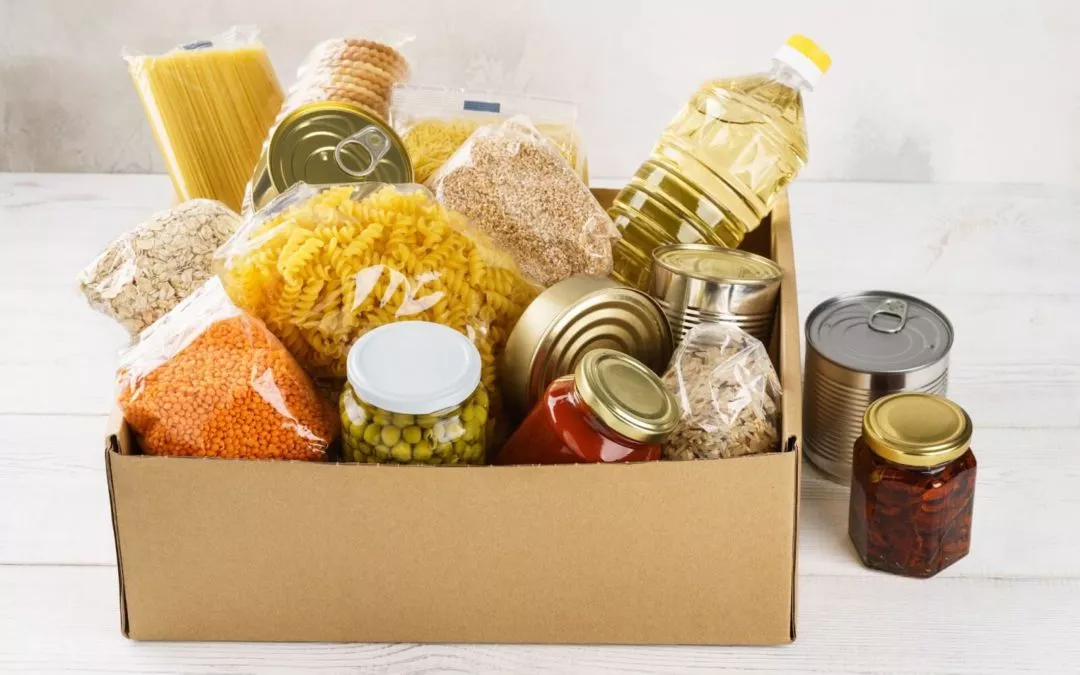In 2021, generous donors gave us more than 3.925 million pounds of food, 9 percent of which came from food drives. We turned around and distributed more than 3.441 million pounds of that to people in need in our community.
Distributing food to people in need via our food pantries is an essential part of our mission, which is to ultimately end poverty in our community. This year, we plan to better reach the people who don’t have access to enough food—11.5 percent of people in Utah County, 11 percent in Wasatch County, and 10.4 percent in Summit County. Here’s how we’re going to do it.
Open More Pantries
We already operate food pantries in Provo, Springville, Heber, and Coalville and smaller pantries in schools around the area. It’s time to expand to serve more people.
Our goal this year is to open additional pantries so that people in need don’t need to travel too far from home for help. First on our list is getting a new pantry opened in Orem’s Friendship Center. After that, we’re looking at forming more partnerships to bring food to other area schools. These partnerships have provided critical support to these school efforts to feed Utah County children who might be facing food insecurity.
While we operate our larger community pantries, we also work with community partners to open smaller pantries. At partner pantries, we help stock the shelves but don’t operate them. Most partner pantries are in schools and are only open during hours set by the school. These pantries are incredible and help students and families. The limited hours, though, mean that people can’t always rely on the pantry being open when they need it.
“We’re trying to open more pantries that will be open five days a week and help more students beyond those that go there,” said Lisa Thomas, our community food programs manager. “You can get more things at a community pantry than a partner pantry.”
Make Pantries More Client-Friendly
Going to a food pantry can be an intimidating experience because it can be hard to admit that you need help. One of the ways we want to help clients feel better at our pantries is to make the experience feel more like grocery shopping.
Once they’ve filled out the paperwork, people will go to the pantry and shop. They’ll be able to choose what they need and want, though we will limit eggs, butter, and meat based on family size. We’ll also have hygiene items in Ziplock bags so they can quickly grab what they need.
Find Solutions to other Challenges
We’re facing the same barriers for our food pantries and food bank that people are facing all over the country.
One of our biggest hurdles at the moment is having a reliable food supply. Many items are hard to find because of supply chain issues, and prices are increasing. For example, we get donations from the Bishops’ Storehouse, but they recently ran out of items. Our goal is to get the word out to the community about specific needs to serve our clients better. We are currently in need of canned fruit like mandarin oranges and pineapple, canned pasta sauce and baked beans, chili and pork and beans. We also are in need of healthier items, gluten-free foods, diapers, and sanitary products.
Another issue we’re facing is finding volunteers who want to donate their time on a regular basis. When we don’t have a consistent volunteer force, our staff members have to work at pantries, taking them away from their other responsibilities. We’re focused on finding people who want to donate the time consistently so that we can count on them to help us staff our food pantries.
Our target is to help end poverty, and food pantries are an essential part of that mission. This year, our goal is to better serve people in need in our community by opening more pantries, making them more client-friendly, and looking for solutions to our pantry challenges. If you want to join us or donate, check our list of ways to help.

